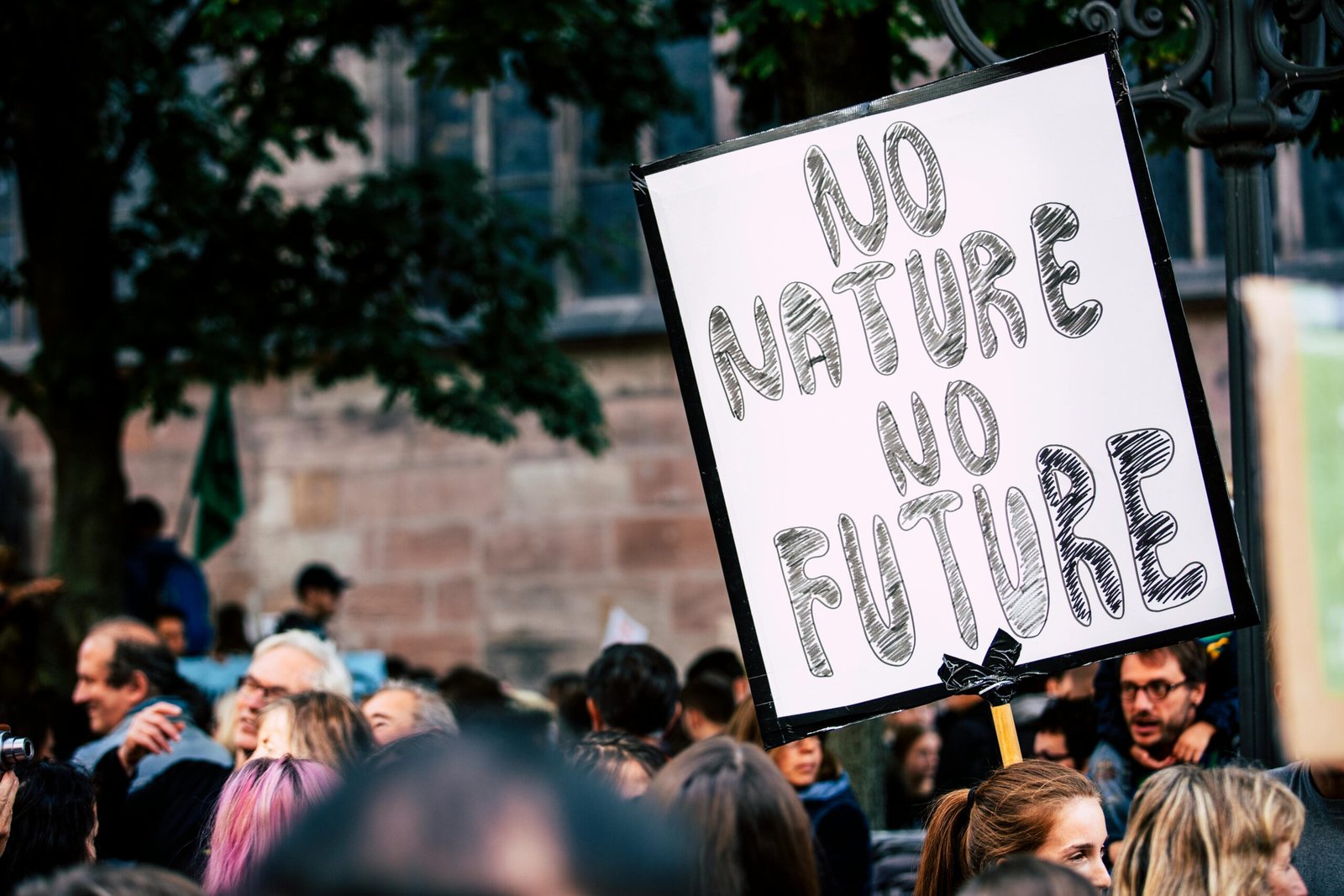On 12 December 2015, The Paris Agreement was adopted by 196 countries at the UN Climate Change Conference (Cop 21). The goal was to limit the rise in global temperatures to 1.5 degree celsius from pre-industrial levels by reducing the Greenhouse Gas (GHG) emissions. However, the efforts didn’t match the goal. In 2020, the Earth’s temperature had already risen to 1.2 degrees. Now, it is estimated that we would reach the target levels as soon as in the next 5 years2. Such rise in temperature brings with it devastating impacts on the planet – rising sea levels, extreme weather events, diseases- and with these, mounting economic losses. This affects everybody, but the impact is felt more on the poorer sections of society.
Before we dive into the topic, it is essential to understand the broader macro-level implications of climate change on countries.
The disproportionate impact of climate change on countries
The developed countries or the richer nations have contributed to global warming by a far greater percentage than the few, fast-developing economies in the world today. Although India and China have been criticised for their overall share in GHG emissions, on a per capita basis, the US emits 20 metric tons of CO2e per year3, which is nearly double that of China and 10 times the amount emitted by India. This difference is even bigger when considering the contribution of underdeveloped countries to the overall emissions.
However, the impact of climate change is not proportionate to the amount of GHGs released. The deviations are observed in two areas:-
a) the temperature variations and hence extreme weather events experienced and b) the resources to mitigate impact.
Higher temperature variations mean the range from hot to cold increases across periods of measurement such as days, months or years. This increases the frequency and severity of extreme weather events. According to a study, countries near the equator will experience such higher fluctuations and average temperatures4. Most of these countries are those that have contributed least to the changing climate but will be the ones that bear the greater brunt of it.
Low-income nations face significant resource constraints, both in terms of capital and materials, when it comes to addressing climate-related disasters. Some countries possess greater financial, technological, and infrastructural capabilities to implement adaptation and mitigation measures, while others lack the necessary resources making them more susceptible to the adverse effects of climate change. These events not only disrupt the lives of the people but also push them further down the socioeconomic ladder, diminishing their standard of living. Furthermore, adaptation measures and policy changes, such as emission reductions and carbon taxes, often fail to adequately consider the needs and vulnerabilities of these marginalized populations. It is unreasonable to expect a country to achieve overarching goals when it struggles to meet the basic needs of its own people.
Now let’s understand the connection between such disasters and the financial stability of an economy using a few examples.
Financial impacts of extreme weather events in India
Here are several instances illustrating the financial implications of extreme weather events.
- In March 2023, hail storms and unseasonal rains across parts of India damaged winter crops5 that were ready to be harvested causing losses in crores of rupees. Crops such as mangoes and Isabgol suffered production losses of 25%6 and 50%7 respectively. Prices of essentials such as wheat, jeera, chana and few summer fruits increased due to shortage in supply. This article by Indian Express gives a detailed explanation of the effect varied temperatures have had on crops in the previous two years.
- February 2023 was the hottest ever since the year 19018, when record-keeping began. It was the same for March of 2022. Seems like summer arrives early each year. Moreover, climate change makes record-breaking heatwaves in India now 100 times more likely9. The northwest region should now expect a heatwave that exceeds the record temperatures seen in 2010 once every three years. Without climate change, such extreme temperatures would occur only once every 312 years10. An estimate showed that increased heat will affect outdoor labour hours costing India 2.8% of its GDP by 2050. However, we already surpassed that figure, as in 2021 another study noted that 167.2 billion11 potential labour hours were lost representing incomes equivalent to 5.4% of the nation’s GDP.
- The year 2020 was probably the worst as climate disasters and diseases hit the world. It is estimated that India lost $87 billion12 in damages as droughts and cyclones ravaged the country.
How the poor gets affected
Climate change is affecting the way we live, now more than ever. If earlier, the effects were not as prominent in your everyday life, they have become strikingly evident now. India is frequently experiencing intense heatwaves and cold waves that have caused significant number of deaths. The poor and homeless lack the means to utilize air conditioners or heaters to bear through these harsh temperatures thus being the worst affected.
Moreover, climate change is making everyday food items – such as cereals, milk and spices13 – expensive, primarily due to diminishing crop yields. Unpredictable weather patterns pose numerous difficulties during the cultivation and harvest periods. This in turn reduces the output, and hence the overall supply. As expenditure on essentials make up for a sizeable portion of their incomes, this weighs on the poor more. It also increases the toll on small scale farmers who already work very hard to reap a harvest that gives returns sufficient enough to sustain them.
The growing scarcity of clean water presents yet another pressing issue. This problem is compounded by the lack of proper implementation of stringent pollution control measures. The country is blessed to have perennial rivers such as the Ganga and Yamuna but they are a part of the top most polluted rivers14 in India. This limits access to safe drinking water, adding to the hardships faced by communities. Further, polluted water bodies experience algae blooms and eutrophication which affect aquatic life thus threatening the livelihoods of those depended on capture-based fishing.
Additionally, rising heat pushes the demand and cost of non-renewable energy up while the supply slowly tightens as resources get depleted. Global warming is also breeding a whole host of diseases that are likely to burden healthcare systems and escalate medical expenses.
The aggregate impact of all these factors is reducing disposable incomes and pushing a whole class of people towards the brink of poverty.
Swift action is imperative to mitigate the adverse effects of climate change on these communities. Without timely intervention, the efforts aimed at reducing inequality and implementing upliftment measures would prove futile, as any progress made would subsequently be reversed due to the ill effects of climate change.
Call for action
Once we understand the impact, we can work towards mitigating it, using available resources and existing methods. Some of them include:-
I. PROMOTING SUSTAINABLE FOOD SYSTEMS
India houses a 1.4 billion15 population and feeding them is not an easy task. As climate change threatens food security around the world, the task at priority should be to help promote self-sustaining food systems. Some proven ways are to use crop rotation, organic farming and agroforestry18. These not only help increase crop yields but also provide a diverse source of income for farmers while maintaining environmental health and reducing emissions during the process. To combat extreme weather events that lead to water scarcity or excess water, practices such as the Bhungroo19 and rain shelter cultivation can be adopted.
Farmers should be educated on these methods and initial aid should be provided to get them started. Once the benefits start accruing, such practices can become long-term sources of livelihoods.
Another agriculture allied activity that is a source of livelihood to millions is fishing. This sector has expanded rapidly, thanks to switching from capture-based fishing to culture-based20 in inland fisheries and increased output from marine fisheries. In this case, fishers should be encouraged to adopt culture-based and controlled capture methods. This would ensure that the species are not removed at a rate faster than their natural reproduction. Presently, there are very few sustainable fish culture (farming) techniques that are employed by a meagre percentage of the fishing industry. The government has introduced programmes such as the Pradhan Mantri Matsya Sampada Yojna (PMMSY), which does include a sustainability aspect to it. However, we will only know the results in a few years.
II. INVESTING IN RENEWABLE SOURCES OF ENERGY
We have to reduce our dependency on coal on an urgent basis. We cannot continue to destroy acres of forest land while on the other, set targets of achieving net zero. Destroying carbon sinks will only exacerbate global warming. The share of renewable energy needs to be increased at a faster pace. The good news is, India’s investments in renewables are at record levels21 and over time, the developments in solar and wind energy have made them more affordable. Additionally, drawing energy from nuclear sources, albeit risky, can prove to be a good substitute for coal – in terms of its ability to generate more power from a relatively small amount of input.
III. STRICT MEASURES AGAINST POLLUTION AND PROPER IMPLEMENTATION
Improvements in ‘ease of doing business’ should not come at the cost of the environment. It has been proven time and time again that such short-term actions lead to long-term losses. In order to safeguard waterbodies, the governing authorities need to ensure that we have in place, strict anti-pollution measures along with stringent punishments for breaches made by both – individuals and businesses. Additionally, more help should be extended to non-governmental organisations and non-profits striving to keep our rivers clean.
IV. GENERAL
At the more micro level, initiatives should be taken by the members of the society to educate, aid and promote clean and heathy living among the less privileged sections of society. It is only when those affected are involved, will change take place from the roots.
Thus, urgent action is needed to promote sustainable practices in agriculture, invest in renewable energy, implement strict pollution control measures, and engage communities to find solutions. Only through collective efforts can we mitigate the adverse effects of climate change and ensure a sustainable future for all.
GLOSSARY
Greenhouse Gases – These trap the sun’s heat in the atmosphere increasing the temperature of the Earth’s surface. Some common gases included are Carbon dioxide (CO2), Methane (CH4), Nitrous oxide (N2O), and fluorinated gases such as Hydrofluorocarbons (HFCs), Perfluorocarbons (PFCs), Sulfur hexafluoride (SF6) and Nitrogen trifluoride (NF3).
Extreme Weather events – are occurrences of unusually severe weather or climate conditions that have significant impact on communities and natural ecosystems. These are conditions that rank above a threshold value as calculated using historical measurements.
Crop rotation – Growing different types of crops in succession on the same land in order to maintain soil quality and hence output.
Organic Farming – Includes using only ecologically based pesticides and fertilizers derived from plant and animal waste. New concepts also involve preventing nitrate leaching into underground water and preventing soil erosion.
Agroforestry – Cultivation, growing and rearing different types of crops, trees, shrubs and livestock on the same land to diversify output and increase benefits from the land while maintaining a healthier ecosystem than what conventional agriculture provides.
Perennial river– One that has water flowing in its bed throughout the year.
Capture-Based fishing – Involves catching wild fish from water bodies such as rivers, lakes and seas. This method proves to be more harmful as overfishing can deplete the species at a faster rate and risks capturing unneeded fishes as well.
Culture-Based fishing – Involves growing and rearing fish in an artificially constructed water body. This is a more controlled method as the type of fishes to be bread and the number is decided. Although this requires additional resources.
Disposable Income – That portion of income that an individual can spend or save after deducting income taxes.
EXTERNAL RESOURCES (for additional learning)
- The Paris Agreement –
https://unfccc.int/sites/default/files/resource/parisagreement_publication.pdf - World to hit 1.5 degree celsius rise in the next 5 years (published in 2021) –
https://news.un.org/en/story/2021/05/1092842 - Linking Climate and Inequality –https://www.imf.org/en/Publications/fandd/issues/2021/09/climate-change-and-inequality-guivarch-mejean-taconet
- How climate change will affect developing countries more-
https://www.economist.com/graphic-detail/2018/05/09/climate-change-will-affect-developing-countries-more-than-rich-ones - Unseasonal rains and hail damage crops in India-
https://www.nasdaq.com/articles/unseasonal-rains-and-hail-damage-crops-in-india - Mango crops affected by unseasonal rains-
https://www.newindianexpress.com/nation/2023/apr/06/mango-growers-worried-after-20-25-percent-of-crop-hit-by-unseasonal-rains-in-uttar-pradesh-2563333.html - Unseasonal rains expected to drive commodities prices up-
https://economictimes.indiatimes.com/news/india/unseasonal-rain-expected-to-increase-prices-of-commodities-in-short-supply/articleshow/98880122.cms - India’s hottest February –
https://weather.com/en-IN/india/news/news/2023-03-01-february-2023-was-indias-hottest-in-its-122-year-recorded-history - Extreme weather events like heatwaves and cold waves become more likely in India –
https://economictimes.indiatimes.com/news/india/climate-change-making-extreme-heat-waves-in-india-100-times-more-likely-study/articleshow/91658659.cms - https://www.bbc.com/news/science-environment-61484697
- Loss in labour hours due to rising heat-
https://www.bbc.com/news/world-asia-india-63384167 - Loss due to climate disasters in 2020 –
https://www.hindustantimes.com/india-news/india-lost-87-billion-to-climate-disasters-in-2020-report-101635272896946.html - India Food Inflation figures for May 2023 –
https://tradingeconomics.com/india/food-inflation - List of top most polluted rivers of India –
https://kanigas.com/10-most-polluted-rivers-of-india/ - India current population figures –
https://www.worldometers.info/world-population/india-population/ - More news and articles on widening gap between rich and poor due to climate change –
https://woods.stanford.edu/news/climate-change-widens-gap-between-rich-and-poor - Different ways to advance towards sustainable agriculture-
https://www.weforum.org/agenda/2023/04/7-ways-to-accelerate-the-transition-to-sustainable-agriculture/ - Learn more about agroforestry and the practices involved in it-
https://www.britannica.com/science/agroforestry - Water saving techniques for the summer –
https://www.thebetterindia.com/176328/india-farmer-drought-save-water-farming/ - Difference between inland fishing and marine fishing –
https://www.netexplanations.com/difference-between-marine-and-inland-fisheries/ - India’s renewable energy investments –
https://www.weforum.org/agenda/2022/07/india-investment-renewables-green-energy/ - Different ways you can manage your plastic waste in India-
https://sustainthegreen.in/2023/01/18/what-can-you-do-with-your-plastic-waste/ - Contribute to NGOs working for climate in India –
https://sustainthegreen.in/ngo-support/ - The concept of Planetary Boundaries –
https://www.stockholmresilience.org/research/planetary-boundaries.html





